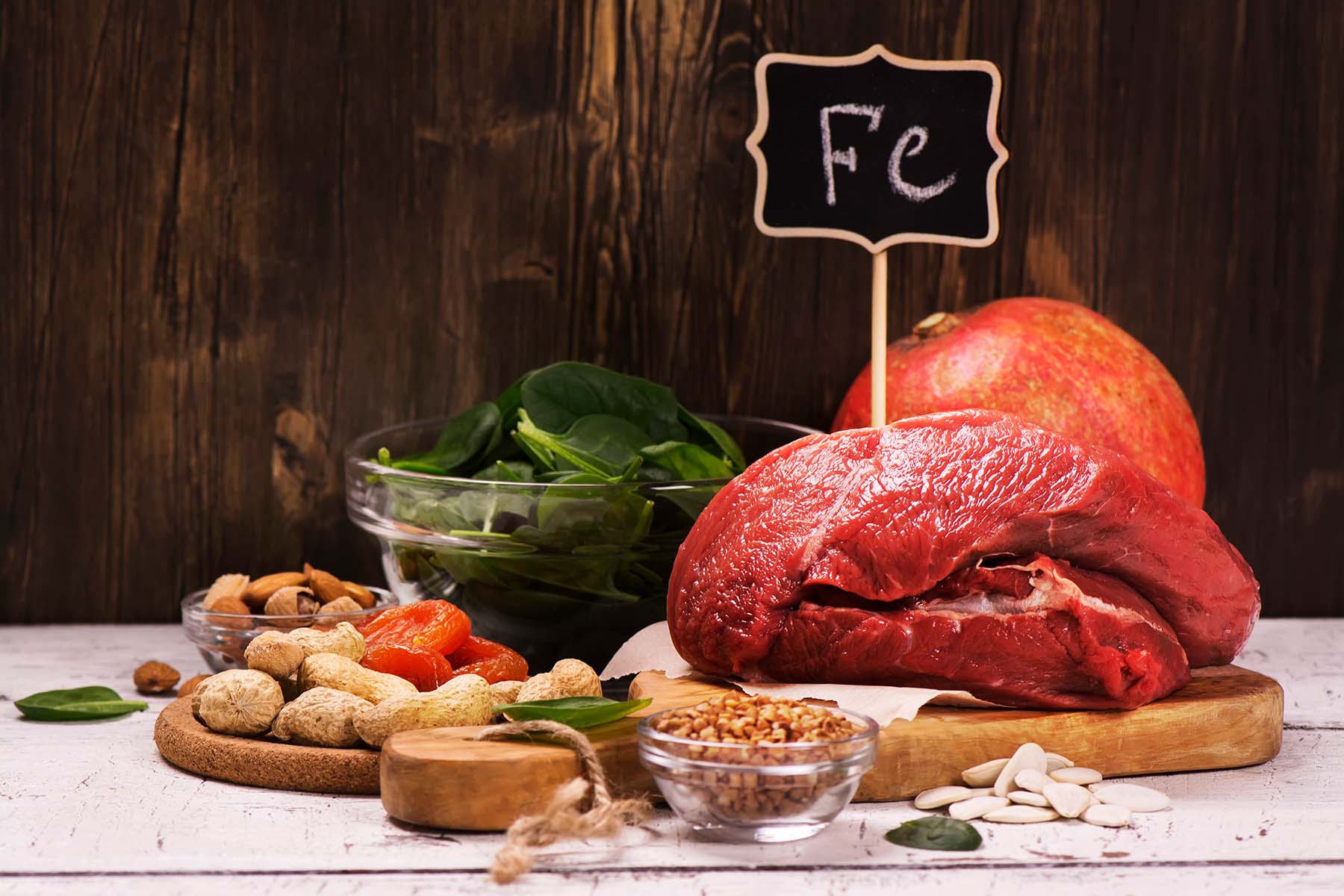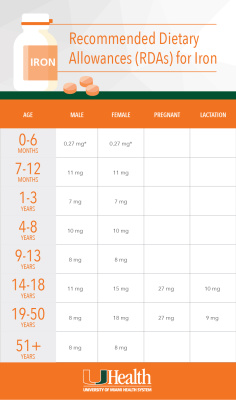Ask the Dietitian: The Intel on Iron

In the third of our seven-part series on minerals, we speak with Sheah Rarback, a registered dietitian nutritionist with the University of Miami Health System, about iron.
Iron is a powerhouse among minerals. Why is it important?
Sheah Rarback: Like all minerals, iron is multifunctional. It helps our cells and hormones function and allows us to grow and develop. Hemoglobin, an iron-containing protein in the blood, accepts, stores and transports oxygen and iron to the cells. Myoglobin is an oxygen and iron binding protein found in muscle tissue.
In foods, you find two types of iron: heme and non-heme. Heme is found only in animal products (especially red meat). Non-heme is found in plants and also some animal products.
Is one form of iron more important than another?
SR: Both forms are important, but of the two, heme is more easily absorbed. Vegetarians and vegans get only non-heme iron in their diet. This isn’t necessarily a problem. Your body functions well with only non-heme iron, but I recommend combining non-heme foods with vitamin C to help absorb the iron better. You could, for example, eat iron-fortified cereal with strawberries or sprinkle lemon juice on steamed broccoli, spinach or Brussel sprouts.
How can I tell if I’m iron deficient?
SR: You might not be getting enough iron if you have headaches, dizziness, fatigue and weakness. If this progresses to iron depletion, otherwise known as anemia, the symptoms become more severe.
Which individuals are more likely to become anemic?
SR: Several factors put people at risk, including:
- Age: infants, teens and pregnant women
- Heavy menstruation
- Cancer
- Gastrointestinal surgery or disorders
- Heart failure
- Regular use of aspirin and NSAIDS such as ibuprofen, antacids and calcium
Why are babies, teens and pregnant women at higher risk of iron deficiency?
SR: Expanding blood volume is the main reason. When the body grows rapidly, it doesn’t always produce enough iron to keep up with the body’s demands. Fortunately, infants are born with a six month supply of iron. However, iron deficiency in these age groups is important to consider because the gummy vitamins popular with children, teens and some adults don’t contain iron. Gummies are made this way because of the risk of iron toxicity – kids can’t tell the difference between a gummy vitamin and candy. Also, many of my clients are surprised to learn that prenatal gummy vitamins don’t contain iron.
According to the RDA chart, our need for iron tapers off as we age, right?
SR: Yes, at age 51, iron needs decrease. That’s why age-specific supplements like Centrum Silver® have no iron. If you’re in that age group, be aware of your dietary habits. If you eat several bowls of cereal a day, remember that most cereals are iron-fortified. The same is true if you regularly eat red meat. Some studies show increased risk of cardiovascular disease if you get too much iron.
If a blood test shows I’m low in iron and my doctor or registered dietitian recommends a supplement, does it matter when or how I take it?
SR: Take your supplement with food, when you’re most likely to remember it. If you work during the day, breakfast might be the best time. Or, put your iron supplement by your toothbrush, since that’s something you do every day. Don’t take iron with milk, coffee or tea – those beverages interfere with iron absorption.
People know that the best source of vitamins and minerals is food. Where are we most likely to find iron?
SR: Here are some top food sources:
Heme:
- Beef, lamb, pork – most readily available source of heme iron
- Poultry and fish
- Shellfish
Non-heme:
- Enriched grains: cereals, breads, crackers
- Lentils and beans
- Tofu
- Brussel sprouts
- Broccoli
- Kale
- Spinach
- Raisins
- Dried apricots
- Prunes
Is it possible to overload on iron – from food or supplements?
SR: Our iron needs diminish as we age, so again, if you’re over age 51, be aware of how much iron you’re getting in your diet. People with hemochromatosis, a heredity disease, must be especially careful. Their organs absorb excess iron, which can lead to life-threatening conditions.
Is there a simple way to test my iron levels?
SR: One way is to donate blood. Whenever you donate, your iron levels are tested. It’s an easy way to do something good for yourself and for your community.
The Takeaway:
A multifunctional marvel, iron helps our cells, hormones and muscles work well. Red meat is your best bet for the most easily absorbed form of iron, but vegetarians and vegans can get enough iron from plant sources. Older adults need less iron; babies, teens and pregnant women may need to supplement if their iron needs aren’t keeping up with their growth.
Likewise, people with cancer, digestive disorders or those who regularly take aspirin, NSAIDs and antacids should get their iron level checked. That’s especially true if they experience dizziness, headaches and fatigue. Deficiencies aside, it’s easy to get too much iron since so many foods are iron fortified. Be mindful of your diet, get your blood checked, eat a balance of healthy foods and consult a registered dietitian if you have questions.

Nancy Moreland is a regular contributor to UMiami Health News. She has written for several major health care systems and the Centers for Disease Control and Prevention. Her writing also appears in the Chicago Tribune.
Tags: iron, minerals, Nutrition, Sheah Rarback, supplements
